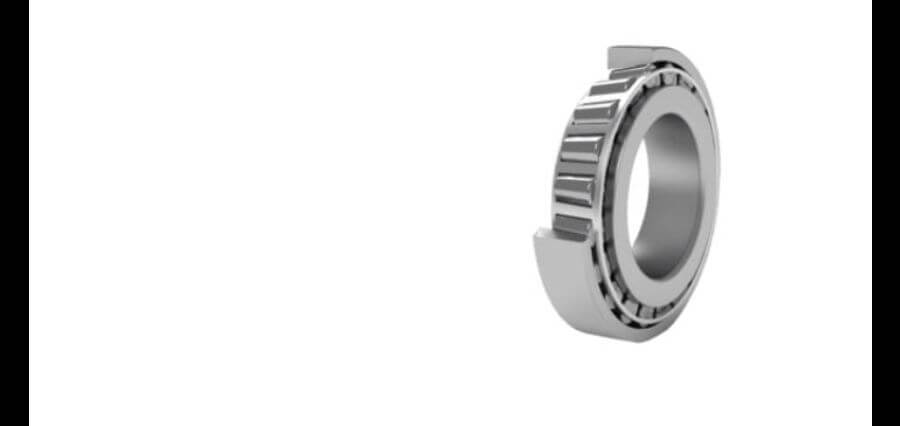Roller bearing casters are the most fundamental components and are critically important in various industries and applications. Whether you are transporting heavy machinery, transport carts, or shelving units, working with the right casters from the right manufacturer can make all the difference in ensuring smooth operations and enhanced productivity. In this comprehensive guide, we will explore what these roller bearing casters are, their common applications, how you can choose the right caster, their advantages, and some basic maintenance tips for casters.
A Brief Introduction to Roller Bearing Casters
Roller bearing casters are a type of caster wheel that uses roller bearings. These tiny bearings are designed to reduce friction and complement easy movement. Roller bearings consist of small cylindrical metallic rollers that carry the load and distribute the weight evenly, enabling smoother and more efficient rolling. These are different from roller ball bearing casters, which contain small spherical balls. So roller bearings provide a larger surface area, making them ideal for heavy-duty applications.
What Makes Roller Bearing Casters a Better Choice?
Choosing roller bearing casters over ball bearing or other casters offers various benefits. Here, we will discuss these advantages briefly.
Higher Load Capacity: Roller bearings can support more load capacity than other types of bearings. This quality makes them an ideal choice, especially for heavy-duty industrial applications where heavy equipment needs to be transported.
Smooth & Efficient Rolling: The particular shape of this type of bearing, which is cylindrical, reduces friction, allowing smooth and consistent movement with extra effort.
Durability: Roller bearing casters are specially engineered to withstand intense working conditions, including high impacts, heavy loads, and continuous usage. These are less prone to wear, making them a reliable long-term investment.
Versatility: Since these casters come in various sizes and configurations, this feature makes them suitable for every application, from light-duty carts to heavy-duty industrial machinery.
Different Types of Roller Bearing Casters
There are different types of roller bearing casters, each designed for a variety of applications. Understanding their structure, types and usage can enable you to make more informed decisions.
| Type | Description | Best For |
| Rigid casters | Fixed in one direction for straight line movement | Equipment that only moves forward and backward |
| Swivel casters | Allows 360 degree rotation for versatile maneuverability | Carts and trolleys requiring sharp turns |
| Locking casters | Equipped with brakes or locks for added safety | Situations requiring secure stationary positions |
| Heavy duty casters | Built with reinforced materials for extreme load capacity | Industrial machinery and heavy loads |
What Type of Roller Bearing Caster is Best for You?
There are several factors that determine the suitability of a roller bearing caster for a particular job and setting. Here are some of those defining factors:
Load Capacity
This is the primary factor that helps you determine the right type. First, begin by assessing your minimum and maximum load management requirements. Furthermore, make sure to distribute the weights evenly on all casters. For instance, if your cart weighs 1200 lbs and you are using four casters, each caster should ideally have a load capacity of 300 lbs.
Wheel Material
The material composition of your roller ball bearing caster is a critical consideration for performance, especially when working on mixed surfaces, including plain and rough terrains. Common material include:
Polyurethane: This material offers a blend of durability and smoothness, and it is especially suitable for indoor use with relatively fine surfaces.
Rubber: This material offers more enhanced shock absorption and good grip, making it an ideal choice for uneven surfaces.
Steel or Cast Iron: This material is highly suitable for heavy-duty applications; however, these metallic wheels can be noisy and may harm delicate floors as well.
Caster Size
Size is an important determinant of mobility and load capacity. Wheels with larger diameters can roll more easily over obstacles and uneven surfaces. On the other hand, smaller wheels with wider shapes offer more stability for moving heavy loads.
Swivel vs. Rigid Caster
We have already discussed the difference in movement between these two types. So, depending on the nature of operations and requirements, you can choose one that best suits your requirements. Swivel casters offer greater maneuverability but can be hard to handle under heavy loads. The rigid casters offer better stability and make it easier to steer in straight lines.
Environmental Conditions
Working conditions are also critical when choosing the right casters for your setting. In a standard working environment, you can choose a standard caster, but in extreme temperatures and exposure to moisture and chemicals, you essentially need to opt for bearings and wheels material resistant to these conditions.
Maintenance Tips for Roller Bearing Casters
Irrespective of casters’ type, size, and material composition, regular inspections are key to smooth and continued operations. When neglected, any type of caster can create trouble. Here are some quick maintenance tips:
Regular inspections: Arrange periodic checks for any signs of wear, such as flat wheel spots, rust on bearings, or loose mounting bolts. Address these signs instantly to avoid costly repairs.
Lubrication: Proper lubrication is a kind of food for casters. So always choose a high-quality grease or lubricant suitable for specific environments, especially when the casters are exposed to dust, dirt, or moisture.
Wheel Alignment: Misaligned wheels can cause premature wear and damage over time, making it difficult to control even lighter weights. So, regularly check the wheel alignment and fix if required.
Clean the Casters: Dirt, debris, grime, moisture, and chemicals can damage the wheels and affect their performance. So make sure to regularly clean the casters to avoid unexpected failures and replacements.
Conclusion
Roller bearing casters are a relatively advanced type of bearing casters. These are inevitable components of settings where heavy loads need to be transported with extreme care. So, by choosing the right type of roller bearing casters according to your specific requirements, you can make a more informed decision and make a wise long-term investment.
Furthermore, regular maintenance of your custom-engineered wheels will ensure longevity, functionality, and operation performance. So choose the right caster type, keep it properly maintained and lubricated, and prevent premature expenses.














